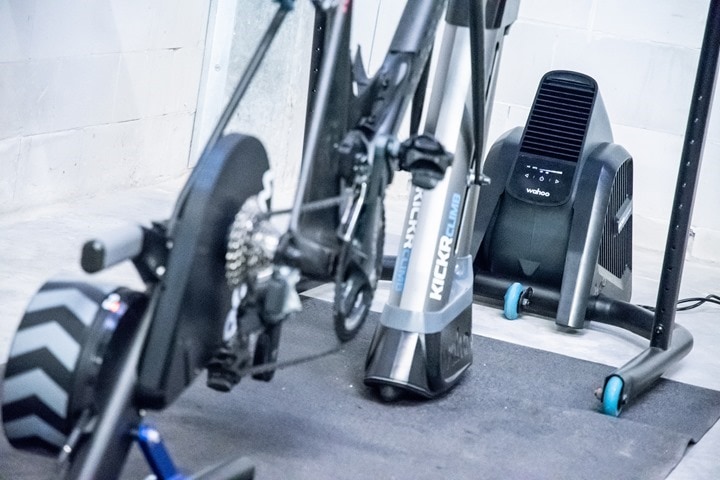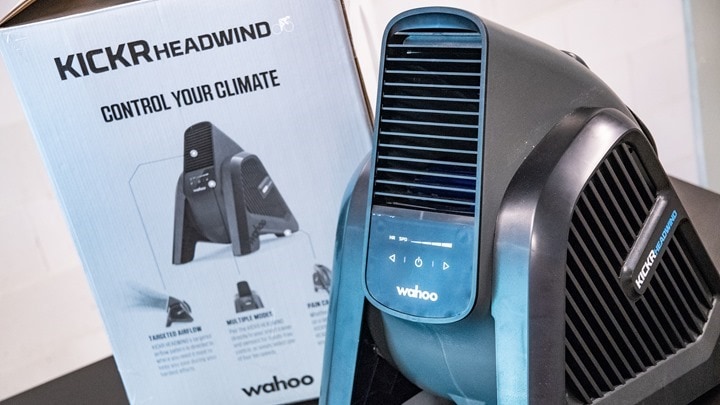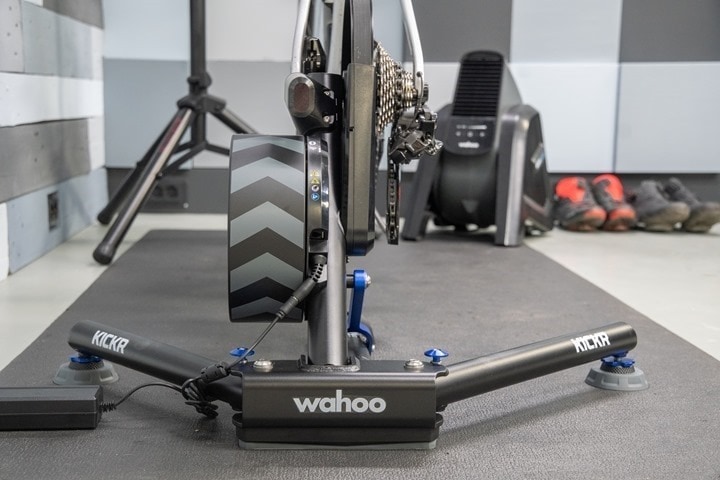Remember back in the old days when the Facebook relationship profile status prominently displayed “It’s Complicated”? That’s basically been Wahoo Fitness the last year or two. Like many things involving private equity, the initial investment sounded great, but over the last two years things went south.
Prior to the pandemic, and prior to private equity, Wahoo was a pretty normal and growing business in the sports tech realm. The company started off in 2010 initially selling ANT+ to iPhone adapters, then Bluetooth sensors, followed by their first trainer, bike computers, and eventually an entire empire of indoor and outdoor training gear – including fans, desks, power meter pedals, treadmill modules, and more. All of this was basically self-funded by Chip Hawkins, Wahoo’s founder – atop funds from a floating dock business (yes, like boat docks).
In any case, Wahoo’s business was doing well pre-pandemic, and then as the pandemic set in, their business exploded with sales. Like most indoor training companies, they couldn’t make stuff fast enough. Though, prices didn’t rise – they stayed as-is. Enter Rhone Equity in June 2021, with an agreement to take a majority ownership stake in Wahoo Fitness. As part of that, Wahoo Fitness as a business took on quite a bit of debt – a loan of $225m. That year Wahoo reported revenues of just under $500m (fiscal year 2021).

Of course, what goes up must come down. Anyone who wanted a trainer had bought one, and by early 2022, the indoor trainer industry was seeing a pretty substantial drop in sales. Long time and major trainer companies such as Kurt Kinetic and Saris (formerly CycleOps) put themselves up for sale, or found themselves in a financial pickle. Kinetic quietly sold their company shell and branding to Magene, where it now basically sells Magene trainers under the Kinetic name (there are no longer production/etc facilities in the US). And the Saris business was purchased by C+A global.
All the while, Wahoo’s debt continued to pile up. Because the previously structured deal meant that Wahoo’s debt was publicly traded, Wahoo had financial coverage initiated on them by Moody’s and the S&P. Thus, every quarter or so we’d get the entertainment-factor of finding out how Wahoo’s financial position was doing, and what financial analysts thought of their dirty laundry. Wahoo even had to pay Moody’s and S&P for that privilege. But, it was essentially a self-fulfilling prophecy. With each new analyst statement, consumers became more concerned with the company’s viability and their ability to make debt payments.
An example from coverage a few months ago would be:
“Wahoo’s capital structure is unsustainable given its negative EBITDA and cash flow. We assess the company’s liquidity as weak because its liquidity sources are insufficient to cover its cash needs over the next 12 months. Wahoo had minimal cash on hand and no availability under its revolver as of the end of 2022 after funding its quarterly interest and mandatory debt amortization payments…. We forecast Wahoo will also violate its consolidated total net leverage covenant, which became effective as of Dec. 31, 2022, adding to its default risk in the first half of 2023.
We’d see further peeks of this financial situation after Wahoo filed a lawsuit against Zwift for patent infringement. The seriousness of Wahoo’s situation often making it into documents, as they pleaded with the judge. Some of it was redacted in the publicly filed documents, but most was not. It was clear Wahoo was teetering on the edge, unable to cover the debt payments. As Wahoo’s founder, Chip Hawkins, said while discussing it, “The business was fine. We had a few fantastic years, and a few bad years, but we would have been fine”, without the ballooning debt payments due to private equity.
And thus, three months ago, Wahoo Fitness was taken over by the banks. Specifically, 15 different banks had called the debt, and took over the business. Making matters worse, their private equity ‘partner’ and owner, Rhone Group, wouldn’t put any money into the business, since that’d only benefit the banks. As a result, Wahoo ceased all marketing activities, ceased most sponsorships and other non-critical business functions, and curtailed product development on various products – all trying to save money.

However, as of yesterday, that “nightmare is over”, according to Wahoo Founder Chip Hawkins.
Chip himself, alongside three “equal strategic partners”, have bought back the business. There is no longer any debt remaining, and Chip says they now have a “super healthy balance sheet” with “plenty of cash runway”. He said that this finally gives Wahoo the breathing room to run their company in a normal way again. That includes “smart” investment in advertising, as well as having a longer-term view on product development.
He noted that while the immediate [indoor training] “market still sucks”, they see recovery going into later this year and next year. As a result, they still “have to be rational” in terms of spending, but that they can at least get back to spending again.
In some prepared comments, Wahoo’s CEO Mike Saturnia, stated:
“The investment from both new and existing investors is a clear sign of confidence in the strength of Wahoo- specifically our team, brand, strategy, and powerful ecosystem of innovative products, software, and services. This could not have happened without months of hard work from and support from our channel partners. We want to thank our supply chain and retail and distribution partners for their trust and confidence as we navigated to a successful conclusion to this process.”
It’ll be interesting to see where Wahoo goes from there, and which product categories they choose to focus on. They are undoubtedly a leader in the indoor smart trainer & smart bike space in terms of technological advancement and branding. But their competitors have largely caught-up, both at the budget end and the high-end, from a technology standpoint. That’s especially true when you look at smart trainer accessories, an area Wahoo somewhat pioneered with premium accessories like the KICKR Desk (8 years old) and Headwind Fan (5 years old), but over the last 3-4 years, has become flooded with more budget-friendly options that do the same thing – often times even better. Wahoo needs to find ways to re-energize those products, alongside their premium gateway drug products.

And of course, Wahoo needs to decide on their next steps for their lawsuit against Zwift. The judge recently ruled against Wahoo’s temporary injunction request (to stop the sale of the Zwift Hub). In the 33-page ruling that was released, the judge noted that:
“Wahoo has raised a number of arguments regarding why the asserted claims would not be likely to be found obvious in light of Zwift’s proposed combinations of prior art. After consideration of the parties’ evidence, however, I find that Wahoo has failed to show that an
obviousness challenge based on one of LeMond Revolution, Shu-Chiung, or Miyata combined with Nakao lacks substantial merit. On a motion for a preliminary injunction, the patentee is required to make such a showing. New England Braiding, 970 F.2d at 883. Because Wahoo has failed to make that showing, there remains a substantial question as to the validity of the asserted claims. For that reason, Wahoo has failed to show that it is likely to succeed on the merits, a prerequisite for obtaining a preliminary injunction.”
In fact, the judge noted numerous times he was skeptical of Wahoo’s claims (even referencing comments on a 2010 post of mine, showing the obviousness of where this technology was heading, prior to Wahoo’s patent). The judge did say that it appeared Zwift likely infringed on some portions of some of Wahoo’s claims, but then of course turned around and heavily questioned the validity of those patents entirely (as above). However, as Wahoo has requested a jury trial, it does tend to be harder to get a patent invalidated there. That jury trial is currently now scheduled for May 13th, 2024 at 9:00AM (yes, a year from now).
It’s likely this could speed up the process of a settlement between Wahoo & Zwift, given that this would continue to be a distraction for both companies over at least the next year, with the only real winners being very high-priced lawyers.
In any case, I’m excited to see Wahoo having the financial resources now to hopefully get their mojo back in product development and focus, and start introducing new and more competitive products – and product categories.
With that – thanks for reading!



0 Commentaires